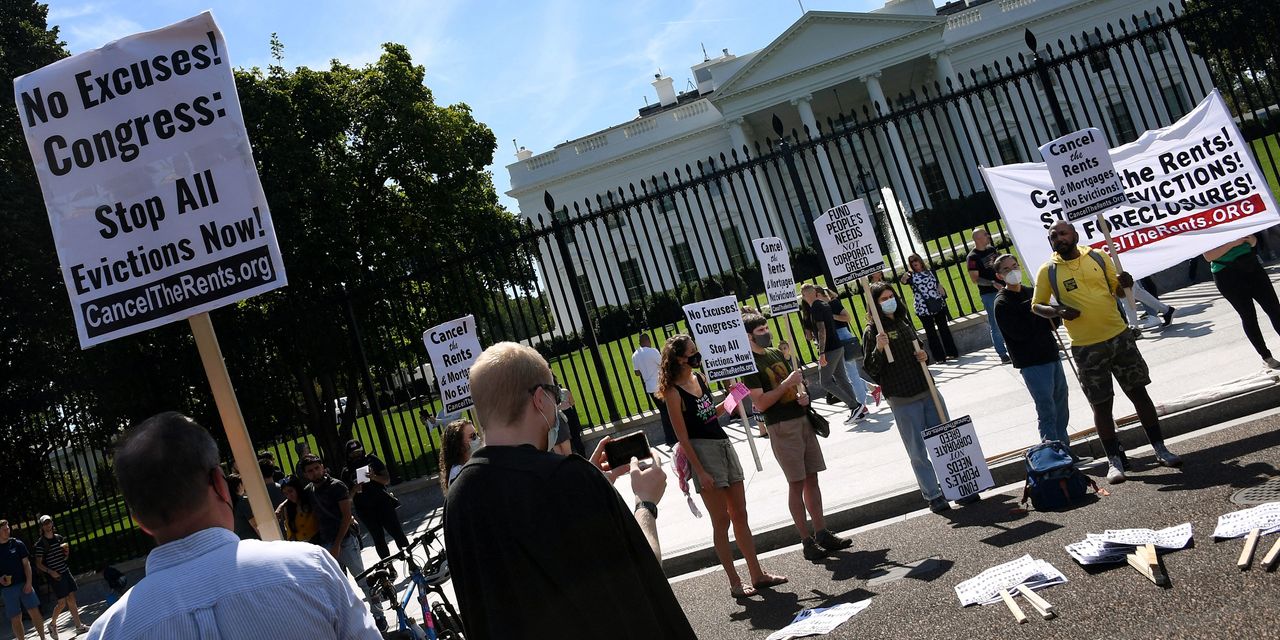President Joe Biden’s administration says it’s making progress in its bid to bring down the staggering housing costs helping to fuel inflation nationwide.
That shortage has also been blamed in part for the country’s worst inflation in decades by driving up prices earlier in the pandemic, creating a market that favored deep-pocketed investors.
But on Friday, the White House said the administration was finalizing regulations to enable the construction of more mixed-income housing, as well as housing for very-low-income tenants and people living in rural areas. By reforming the income averaging rule for low-income housing tax credits (LIHTC) and allowing for more flexibility, the White House said, more projects would qualify for the incentive. The Internal Revenue Service also announced several deadline extensions for affordable-housing projects seeking to qualify for the tax credits, the White House said.
“‘As his action plan reflects, President Biden believes the best thing we can do to ease the burden of housing costs is to boost the supply of quality housing.’”
Other steps, like reforming a financing program at Fannie Mae and Freddie Mac to make it easier to build homes for rent, were also announced Friday.
Much of the impediment to building new homes can be traced to exclusionary zoning laws, which restrict the kinds of homes that can be put in certain neighborhoods and effectively maintain segregation, the White House said back in May.
By favoring the local governments that are promoting density and rural main street revitalization for grant funding from last year’s bipartisan infrastructure bill, the White House hopes to tackle some of those regulatory barriers that have long constrained housing supply, it said in a May statement detailing the housing. Other roadblocks to building housing, including labor shortages and the cost of materials, will also be addressed through meetings with private-sector officials, and the administration will continue to demand immigration reform, according to the White House statement.
“As his action plan reflects, President Biden believes the best thing we can do to ease the burden of housing costs is to boost the supply of quality housing,” the White House said in May. “This means building more new homes and preserving existing federally-supported and market-rate affordable housing, ensuring that total new units do not merely replace converted or dilapidated units that get demolished.”
To be sure, several of the efforts to curb the nation’s housing shortage need the support of Congress, the White House said. Biden’s 2023 budget features a mandatory spending proposal with $10 billion in grants for state and local governments that have already removed barriers to developing affordable housing, and the president’s stalled Build Back Better platform included a new competitive grant program worth $1.75 billion to incentivize states to further “eliminate needless barriers to affordable housing production, including permitting for manufactured housing communities,” the White House said in its May statement.
White House aims to support new construction
Apart from doubling down on exclusionary zoning, the White House said it will work to address the “lack of attractive and low-cost financing for new construction and rehabilitation,” with a focus on financing options for the construction and rehabilitation of single-family homes, properties of two to four units, accessory dwelling units, manufactured and modular homes, and smaller multifamily properties.
Freddie Mac is looking into the possibility of purchasing the high-interest “chattel” loans often used to buy manufactured homes, previously called mobile homes, for example, and the federal government wants to make it easier to both finance and build manufactured homes.
Separately, the feds will continue to urge local governments to use coronavirus relief funds to build and preserve affordable housing, and the federal government will aim to drive housing supply to owner-occupants and “mission-driven entities” rather than investors.
“‘Only through a combination of administrative action and robust federal funding can the country truly resolve its affordable housing crisis.’”
The concern among some advocates is whether the Biden administration is doing too little, too late. At the time of the White House’s May announcement, rent prices were rising nationwide. Evictions were up in some cities, and some people were reportedly already becoming homeless due to an increase in their housing costs.
So while Biden’s plan has several solutions to address the housing shortage long-term, the fact remains that people are suffering now.
“As rents rise, homelessness increases, public housing deteriorates, and millions of families struggle to keep roofs over their heads, robust federal investments and actions are badly needed and long overdue,” Diane Yentel, president and CEO of the National Low Income Housing Coalition, said in a statement when the plan was unveiled in May. “I commend President Biden for taking significant and decisive action, but the administration cannot solve the crisis on its own. Congress must also act with similar urgency and quickly enact Build Back Better’s transformative and badly needed housing investments. Only through a combination of administrative action and robust federal funding can the country truly resolve its affordable housing crisis.”
Tara Raghuveer, the Homes Guarantee campaign director at People’s Action, a progressive advocacy group made up of grassroots organizations across the country, also told MarketWatch in May that Biden’s proposals “barely scratch the surface” of what is needed.
One problem, Raghuveer said, is that the plans depend too much on Congress to succeed.
“The second reason today’s plans seem insufficient, to me, is that they’re overly reliant on the private market to solve problems that the private market has created,” Raghuveer added. “Our housing crisis actually will not be solved by private profiteers. It will only be solved by the federal government and state and local government making decisions and making policy that actually moves housing out of the realm of profit and into a guaranteed public good.”
This article was originally published May 16, 2022, and has been updated.
